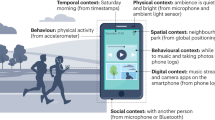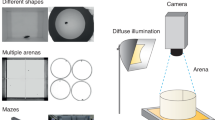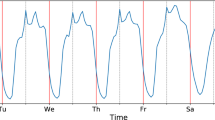Abstract
In 1994, Stanford University's Exposure Research Group (ERG) conducted its first pilot study to collect micro-level activity time series (MLATS) data for young children. The pilot study involved videotaping four children of farm workers in the Salinas Valley of California and converting their videotaped activities to valuable text files of contact behavior using video-translation techniques. These MLATS are especially useful for describing intermittent dermal (i.e., second-by-second account of surfaces and objects contacted) and non-dietary ingestion (second-by-second account of objects or hands placed in the mouth) contact behavior. Second-by-second records of children contact behavior are amenable to quantitative and statistical analysis and allow for more accurate model estimates of human exposure and dose to environmental contaminants. Activity patterns data for modeling inhalation exposure (i.e., accounts of microenvironments visited) can also be extracted from the MLATS data. Since the pilot study, ERG has collected an immense MLATS data set for 92 children using more developed and refined videotaping and video-translation methodologies. This paper describes all aspects required for the collection of MLATS including: subject recruitment techniques, videotaping and video-translation processes, and potential data analysis. This paper also describes the quality assurance steps employed for these new MLATS projects, including: training, data management, and the application of interobserver and intraobserver agreement during video translation. The discussion of these issues and ERG's experiences in dealing with them can assist other groups in the conduct of research that employs these more quantitative techniques.
This is a preview of subscription content, access via your institution
Access options
Subscribe to this journal
Receive 6 print issues and online access
$259.00 per year
only $43.17 per issue
Buy this article
- Purchase on Springer Link
- Instant access to full article PDF
Prices may be subject to local taxes which are calculated during checkout



Similar content being viewed by others
References
Adgate J.L., et al. Data collection issues: measurement of multi-pollutant and multi-pathway exposures in a probability-based sample of children: practical strategies for effective field studies. J Exposure Anal Environ Epidemiol 2000: 10: 650–661.
Akland G.G., et al. Factors influencing total dietary exposures of young children. J Exposure Anal Environ Epidemiol 2000: 10: 710–722.
As D. Observing environmental behavior: the behavior setting. In: Michelson W. (Ed.). Behavioral Research-Environmental Design. Dowden, Hutchinson & Ross, Stroudsburg, Pennsylvania, 1975: 8, pp. 280–300.
AuYeung W., et al. Young children's mouthing behavior: an observational study via videotaping in a primary outdoor residential setting. J Child Health 2004: 2: 271–295.
Bentzen W.R. Seeing Young Children: a Guide to Observing and Recording Behavior. Delmar Publishers Inc., New York, 1985.
Black K., et al. Children's mouthing and food-handling behavior in an agricultural community on the US/Mexico border. J Exposure Anal Environ Epidemiol 2005: 15: 244–251.
Boykin R.A., and Nelson R.O. The effects of instructions and calculation procedures on observers’ accuracy, agreement, and calculation correctness. J Appl Behav Anal 1981: 14: 479–489.
Buckley B., et al. Using observational information in planning and implementation of field studies with children as subjects. J Exposure Anal Environ Epidemiol 2000: 10: 697–702.
Canales R.A. The cumulative and aggregate simulation of exposure framework. UMI Dissertation Services, Stanford. 2004.
Chapin F.S. Human Activity Patterns in the City: Things People do in Time and Space. John Wiley & Sons, New York, 1974.
Cohen Hubal E.A., et al. Characterizing residue transfer efficiencies using a fluorescent imaging technique. J Exposure Anal Environ Epidemiol 2005: 15: 261–270.
Echols S.L., et al. Temporal patterns of activities potentially related to pesticide exposure. J Exposure Anal Environ Epidemiol 2001: 11: 389–397.
Fenske R.A., et al. Children's exposure to chlorpyrifos and parathion in agricultural community in central Washington State. Environ Health Perspect 2002: 110: 549–553.
Ferguson A.C. Estimating percutaneous absorption using Micro-Level Activity Time Series (MLATS). UMI Dissertation Services, Stanford. 2003.
Ferguson A.C., et al. Methodologies to capture the micro-activity patterns of children relevant to ingestion exposure. J Exposure Anal Environ Epidemiol 2000: 10: P390.
Ferguson A.C., et al. Methodologies to capture children's activity patterns relevant for non-dietary ingestion exposure, In preparation. J Exposure Anal Environ Epidemiol 2005.
Fortmann R.C., et al. Field evaluation of methods to monitor potential exposure of young children to pesticides in the residential environment, 1991 Final Report, Contract Number 68-02-4544.
Freeman N.C.G., et al. Quantitative analysis of children's micro-activity patterns: The Minnesota Children's Pesticide Exposure Study. J Exposure Anal Environ Epidemiol 2001: 11: 501–509.
Kissel J.C., et al. Field measurement of dermal soil loading attributable to various activities: implications or exposure assessment. Risk Anal 1996: 16: 115–125.
Kranz B.D., et al. The behavior and routes of lead exposure in pre-grasping infants. J Exposure Anal Environ Epidemiol 2004: 14: 300–311.
Lioy P.J., et al. House dust levels of selected insecticides and a herbicide measured by the EL and LWW samplers and comparisons to hand rinses and urine metabolites. J Exposure Anal Environ Epidemiol 2000: 10: 327–340.
MacIntosh D.L., Needham L.L., Hammerstrom K.A., and Ryan P.B. A Longitudinal investigation of selected pesticide metabolites in urine. J Exposure Anal Environ Epidemiol 1999: 9: 494–501.
McCurdy T., et al. The national exposure research laboratory's consolidated human activity database. J Exposure Anal Environ Epidemiol 2000: 10: 566–578.
Mukerjee S., et al. An environmental scoping study in the lower rio grande valley of Texas-III. residential micro-environmental monitoring for air, house dust, and soil. Environ Int 1997: 23: 657–673.
NRC. National Research Council. Pesticides in the Diets of Infants and Children. National Academy Press, Washington, DC, 1993.
O’Fallon L.R., et al. The National Institute of Environmental Health Sciences’ research program on children's health. J Exposure Anal Environ Epidemiol 2000: 10: 630–637.
Ong C. Virtual Timing Device™; DeskTop Timing for the Mac. http://www.samanet.com/prod&serv/vtda.html.Tuesday, June 26, 2001. Assessed March 8, 2004.
Ozkaynak H., et al. Aggregate exposure assessment: Issues and processes. Society for Risk Analysis 1999 Annual Meeting 1999.
Pang Y., et al. Analysis of aggregate exposure to chlorpyrifos in the NHEXAS-Maryland investigation. Environ Health Perspect 2002: 110: 235–240.
Quackenboss J.J., et al. Design strategy for assessing multi-pathway exposure for children: the Minnesota Children's Pesticide Exposure Study (MNCPES). J Exposure Anal Environ Epidemiol 2000: 10: 145–158.
Robinson J.P. How Americans Use their Time: A Social Psychological Analysis of Everyday Behavior. Praeger Publishers, New York, 1977.
Reed K., et al. Quantification of children's hand and mouthing activities through a videotaping methodology. J Exposure Anal Environ Epidemiol 1999: 9: 513–520.
Repp A.C., et al. Differences among Common methods for calculating interobserver agreement. J Appl Behav Anal 1976: 9: 109–113.
Shalat S.L., et al. Nondietary ingestion of pesticides by children in an agricultural community on the US/Mexico border: preliminary results. J Exposure Anal Environ Epidemiol 2001: 13: 42–50.
Simcox N.J., et al. Pesticides in household dust and soil: exposure pathways for children of agricultural families. Environ Health Perspect 1995: 103: 1126–1133.
Szalai A. The Use of Time: Daily Activities of Urban and Suburban Populations in Twelve Countries. Mouton, The Hague, Paris, 1972.
United States Congress. Food Quality Protection Act of 1996: Report together with additional view (to accompany H.R. 1627)(Including cost estimate of the congressional budget office). Rept./104th Congress, 2nd Session, House of Representatives. Washington, DC 1996, pp. 104–669.
US EPA. Dermal and Non-Dietary Ingestion Exposure Workshop. Research Triangle Park, NC, Office of Research and Development. EPA/600/R-99/039, 1999.
Williams P.R.D., et al. Current methods for evaluating children's exposures for use in health risk assessment. J Child Health 2003: 1: 41–98.
Wilson N.K., et al. Design and sampling methodology for a large study of preschool children's aggregate exposures to persistent organic pollutants in their everyday environment. J Exposure Anal Environ Epidemiol 2004: 14: 260–274.
Wilson N.K., et al. Levels of persistent organic pollutants in several child day care centers. J Exposure Anal Environ Epidemiol 2001: 11: 449–458.
Zartarian V.G. A physical-stochastic model for understanding dermal exposure to chemicals. Dissertation. Department of Civil Engineering, Stanford University. 1996.
Zartarian V.G., et al. A pilot study to collect micro-activity data of two to four year old farm labor children in salinas valley, California. J Exposure Anal Environ Epidemiol 1995: 5: 21–33.
Zartarian V.G., et al. Quantifying videotaped activity patterns: video-translation software and training methodologies. J Exposure Anal Environ Epidemiol 1997a: 7: 535–542.
Zartarian V.G., et al. Quantified dermal activity data from a four-child pilot field study. J Exposure Anal Environ Epidemiol 1997b: 7: 543–552.
Zartarian V.G., et al. Quantified mouthing activity data from a four-child pilot field study. J Exposure Anal Environ Epidemiol 1998: 8: 543–553.
Acknowledgements
We thank many members of ERG over the last 10 years who have helped to develop the videotaping and video-translation methodologies and contributed to the collection of MLATS data for children. This research was in part supported through the U.C. Berkeley's Center for the Health Assessment of the Mother and Children of Salinas (CHAMACOS) program (EPA Grant #R826709 and NIEHS Grant # SP01ES09605). We appreciate the contributions of A. Bradman and B. Eskenazi for their work with us on the Time Activity Analysis (TAA) portion of the CHAMACOS project. Our thanks also to the funding sources and individuals we collaborated with us on other projects, in particular the Outdoor Residential Exposure Task Force (ORETF), and the Environmental Protection Agency (EPA). We also appreciate the time and commitment of the participating families and children on all projects.
Author information
Authors and Affiliations
Corresponding author
Rights and permissions
About this article
Cite this article
Ferguson, A., Canales, R., Beamer, P. et al. Video methods in the quantification of children's exposures. J Expo Sci Environ Epidemiol 16, 287–298 (2006). https://doi.org/10.1038/sj.jea.7500459
Received:
Accepted:
Published:
Issue Date:
DOI: https://doi.org/10.1038/sj.jea.7500459
Keywords
This article is cited by
-
Frequency of hand-to-head, -mouth, -eyes, and -nose contacts for adults and children during eating and non-eating macro-activities
Journal of Exposure Science & Environmental Epidemiology (2021)
-
Age-related changes to environmental exposure: variation in the frequency that young children place hands and objects in their mouths
Journal of Exposure Science & Environmental Epidemiology (2020)
-
Inadvertent ingestion exposure: hand- and object-to-mouth behavior among workers
Journal of Exposure Science & Environmental Epidemiology (2016)
-
Mouthing activity data for children aged 7 to 35 months in Taiwan
Journal of Exposure Science & Environmental Epidemiology (2015)
-
A review of soil and dust ingestion studies for children
Journal of Exposure Science & Environmental Epidemiology (2014)



